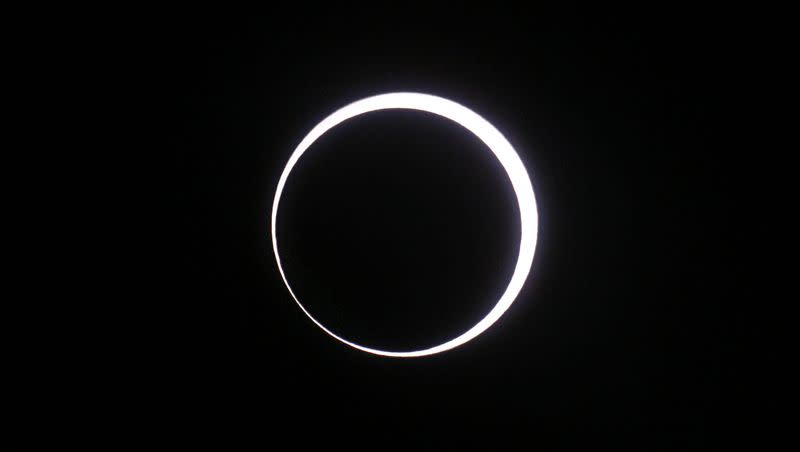What is a ring of fire eclipse? Here’s what you should know

By now, you’ve likely heard about the “ring of fire” solar eclipse heading for the United States on Oct. 14. But what exactly is a “ring of fire,” or annular eclipse, and what makes it so special? Here’s a rundown of the basics.
Related
What is a ring of fire eclipse?
In a total eclipse, the moon is close enough to Earth that it completely blocks the sun. “Ring of fire” is a nickname given to an annular solar eclipse, an eclipse in which the moon does not completely overlap the sun and therefore leaves a ring of visible sunlight around the moon’s shadow.
The moon travels on an elliptical path, meaning it orbits the earth in an oval shape rather than a perfect circle. Because of this, the moon’s distance from earth fluctuates. When the moon is at its closest to the earth, it is approximately 225,623 miles away, according to NASA. At its furthest, it is 252,088 miles away — a difference of 26,465 miles.
At the time of the 2023 ring of fire eclipse, the moon will be near its furthest point from earth and will appear slightly smaller than the sun.
How rare is a ring of fire eclipse?
The last time an annular solar eclipse crossed the United States was May 20, 2012, per the Great American Eclipse, and the next won’t happen for at least another 10 years. On April 8, 2024, those in parts of the northeastern United States will be able to see a total solar eclipse.
How long will the 2023 ring of fire eclipse last?
Saturday’s eclipse will only be visible at certain points on a path from Oregon to Brazil. For those within that path, the actual event will only last four to five minutes, according to Space.com. However, a partial solar eclipse will be visible for about an hour and a half before and after the peak event, giving eclipse watchers a window of almost three hours.
The eclipse will first be visible from land at 9:13 a.m. local time on the coast of Oregon, according to NASA’s Eclipse Explorer tracker. It will first be visible in western Utah around 10:24 a.m. local time and will last be visible from the United States at 12:03 p.m. local time in Texas.
The eclipse will continue through Central and South America before ending at sundown off the coast of Brazil in the Atlantic Ocean.

